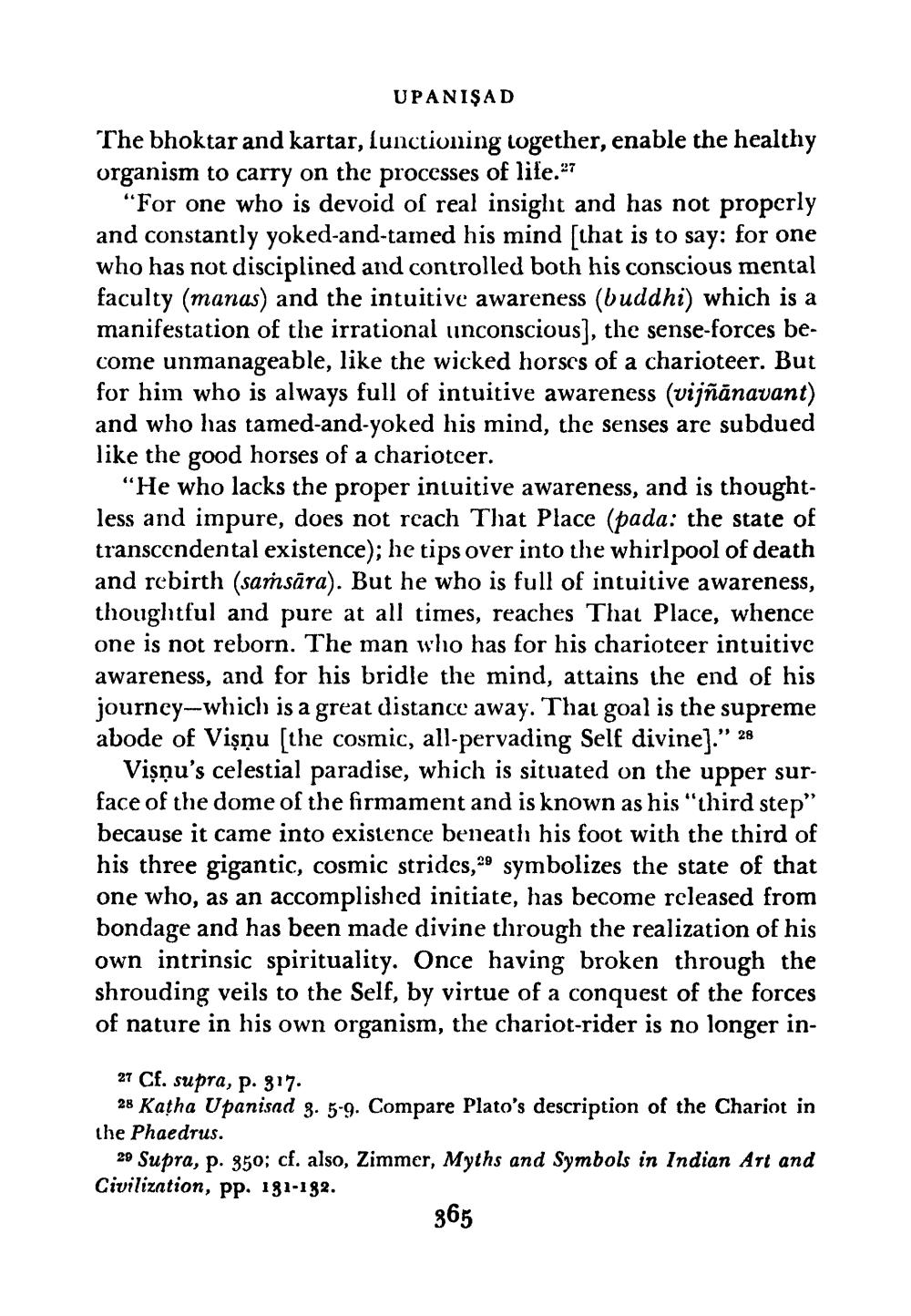________________
UPANIŞAD
The bhoktar and kartar, functioning together, enable the healthy organism to carry on the processes of life."
"For one who is devoid of real insight and has not properly and constantly yoked-and-tamed his mind [that is to say: for one who has not disciplined and controlled both his conscious mental faculty (manas) and the intuitive awareness (buddhi) which is a manifestation of the irrational unconscious], the sense-forces become unmanageable, like the wicked horses of a charioteer. But for him who is always full of intuitive awareness (vijñānavant) and who has tamed-and-yoked his mind, the senses are subdued like the good horses of a charioteer.
"He who lacks the proper intuitive awareness, and is thoughtless and impure, does not reach That Place (pada: the state of transcendental existence); he tips over into the whirlpool of death and rebirth (saṁsāra). But he who is full of intuitive awareness, thoughtful and pure at all times, reaches That Place, whence one is not reborn. The man who has for his charioteer intuitive awareness, and for his bridle the mind, attains the end of his journey-which is a great distance away. That goal is the supreme abode of Vişņu [the cosmic, all-pervading Self divine]."
" 28
Vişņu's celestial paradise, which is situated on the upper surface of the dome of the firmament and is known as his "third step" because it came into existence beneath his foot with the third of his three gigantic, cosmic strides,29 symbolizes the state of that one who, as an accomplished initiate, has become released from bondage and has been made divine through the realization of his own intrinsic spirituality. Once having broken through the shrouding veils to the Self, by virtue of a conquest of the forces of nature in his own organism, the chariot-rider is no longer in
27 Cf. supra, p. 317.
28 Katha Upanisad 3. 5-9. Compare Plato's description of the Chariot in the Phaedrus.
29 Supra, p. 350; cf. also, Zimmer, Myths and Symbols in Indian Art and Civilization, pp. 181-182.
365




